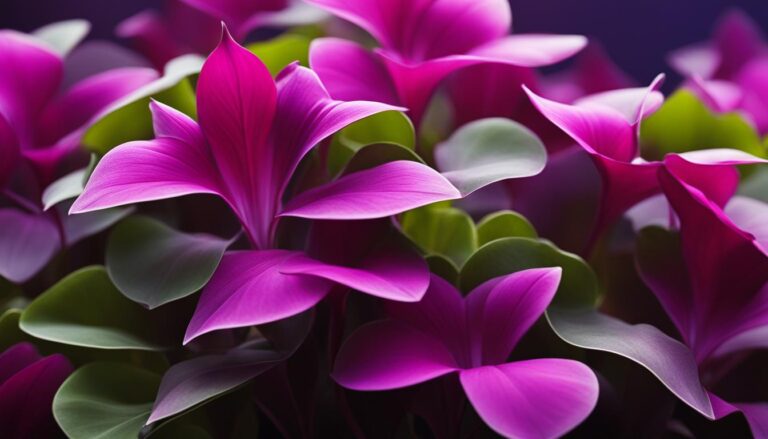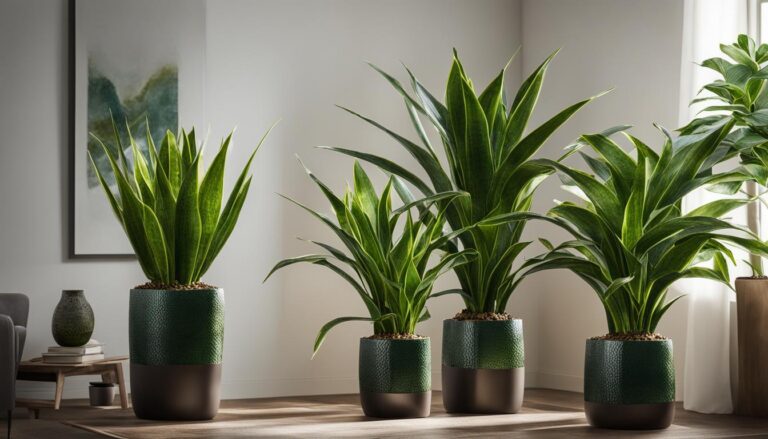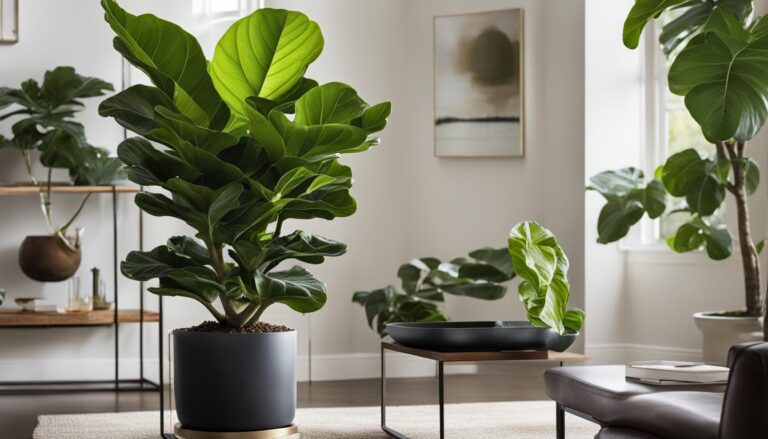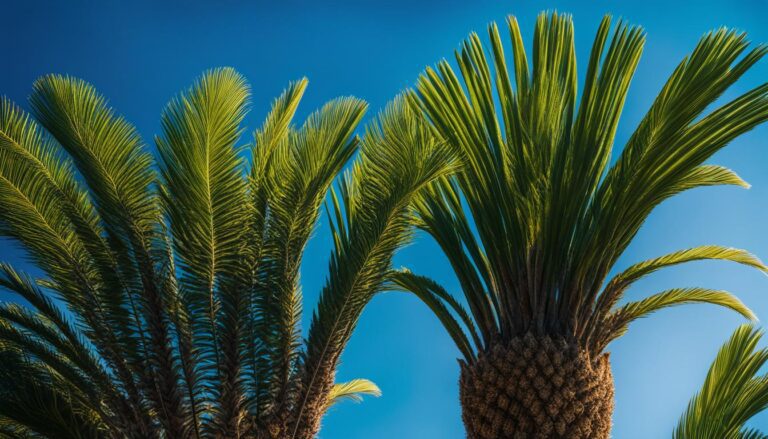
I am excited to introduce you to the extraordinary Kentia Palm (Howea forsteriana), a magnificent indoor plant that will bring a touch of the tropics to your living space. With its stunning clustering foliage and easy care requirements, the Kentia Palm is a must-have for any plant enthusiast.
Indoor plants have become increasingly popular in recent years, and the Kentia Palm is undoubtedly one of the most sought-after choices. Its vibrant green fronds and elegant upright growth habit add a touch of natural beauty to any room.
Not only is the Kentia Palm aesthetically pleasing, but it also offers numerous benefits. This tropical plant acts as a natural air purifier, improving the air quality in your home. It has also been shown to enhance mood, reduce stress, and create a calming atmosphere.
Whether you place it in your living room, office, or even on a patio, the Kentia Palm thrives in bright spaces. With moderate watering and a well-draining soil mix, this resilient houseplant will flourish and reward you with its lush and exotic appearance.
Join me in exploring the world of indoor plants and discover the transformative power of the Kentia Palm.
Care tips: Lighting, Watering, and Fertilizer Requirements
When it comes to caring for your Kentia Palm (Howea forsteriana), proper lighting, watering, and fertilizer are essential. Providing the right conditions will ensure that your palm thrives and remains healthy. Let’s dive into the specific care requirements for this stunning tropical plant.
Lighting Requirements
The Kentia Palm thrives in bright indirect light, making it an excellent choice for any well-lit room. However, it can also adapt to lower lighting conditions, which makes it versatile for various indoor settings.
It is important to avoid direct sunlight, as it can scorch the delicate leaves. Placing your Kentia Palm near a window with east, south, or west-facing exposure is ideal, as it provides the right amount of filtered light. Periodically rotating the plant allows for even growth and minimizes leaf drops within the canopy.
Watering Requirements
Proper watering is crucial for the health of your Kentia Palm. It is best to keep the soil consistently moist but not soggy. Overwatering can lead to root rot and other issues, while underwatering can cause the leaves to turn brown and crispy.
As a general rule, water your palm when the top inch of soil feels dry to the touch. The frequency of watering will vary depending on factors such as temperature, humidity, and the size of your container. Monitor the moisture levels of the soil regularly and adjust your watering schedule accordingly.
Fertilizer Requirements
The Kentia Palm benefits from regular fertilization to ensure optimal growth. Use a balanced liquid fertilizer specifically designed for indoor plants, following the instructions on the packaging.
During the growing season, which typically spans from spring to summer, feed your palm every month or every six weeks. In the dormant season, reduce the frequency to every two to three months.
Be cautious not to over-fertilize, as this can lead to nutrient burn and damage the plant. Regularly remove any accumulated fertilizer salts from the top of the soil to prevent buildup.
By providing the right lighting, watering, and fertilization, you can keep your Kentia Palm healthy and thriving for years to come. In the next section, we will explore how to create the perfect environment to further enhance the growth and well-being of your Kentia Palm.
| Care Aspect | Tips and Information |
|---|---|
| Light | Thrives in medium indirect light; can survive in low light but grows better with more light. |
| Water | Water well, then allow the top 25% of soil to dry out before watering again to avoid root rot. |
| Fertilizer | Fertilize monthly in spring and summer with balanced houseplant food at half the recommended strength. |
| Temperature | Maintain room temperature between 65 and 85 degrees Fahrenheit. |
| Humidity | Does well in basic household humidity. |
| Soil | Use well-aerated, quick-draining potting soil; add sand if soil is heavy and clay-like. |
| Propagation | Propagated by seeds, which is a complex process usually left to experts. |
| Pests | Watch out for spider mites and mealy bugs; treat with biodegradable soap solution or Insecticidal Soap. |
| Special Properties | Non-toxic, safe around children and pets; elegant appearance; slow-growing; improves indoor aesthetics. |
Creating the Perfect Environment for Your Kentia Palm
Creating the perfect environment for your Kentia Palm is essential to ensure its long-term health and growth. This beautiful tropical plant thrives in a tropical atmosphere with specific temperature and humidity requirements.
To provide the ideal temperature for your Kentia Palm, aim for balmy conditions similar to its natural habitat. Keep the plant away from air conditioning units or direct heat sources, as they can dry out the soil and cause stress to the plant. Maintaining a temperature between 65°F and 85°F (18°C and 29°C) is recommended.
In addition to temperature, humidity is crucial for the well-being of your Kentia Palm. This plant enjoys high humidity levels, akin to its native tropical surroundings.
To increase humidity, you can lightly spray the leaves once a week. Another effective method is to place the plant’s container on a bed of wet rocks, which helps to create a more humid microclimate around the plant.
Cleaning and maintenance are also important aspects of caring for your Kentia Palm. Dust can accumulate on the leaves, hindering the plant’s ability to absorb sunlight.
Gently wipe the leaves with a soft, damp cloth regularly to keep them clean and free from dust. Additionally, inspect the plant for any signs of pests or diseases and take appropriate measures to address them promptly.
FAQ
How much sunlight does the Kentia Palm need?
The Kentia Palm thrives in bright indirect light but can adapt to lower lighting conditions. Avoid direct sunlight, as it can scorch the leaves. Ideal placement is near a window with east, south, or west-facing exposure.
How often should I water my Kentia Palm?
The Kentia Palm requires moderate watering to maintain moist soil. It is important to allow the top inch of soil to dry out between waterings. Water the plant thoroughly and ensure proper drainage to avoid overwatering.
How often should I fertilize my Kentia Palm?
Fertilize the Kentia Palm every two to three months during the growing season (spring and summer). Use a balanced liquid fertilizer and follow the instructions on the packaging for proper application.
How do I create the ideal temperature and humidity conditions for my Kentia Palm?
The Kentia Palm thrives in balmy temperatures and high humidity. Keep the plant away from air conditioning units or direct heat sources. To increase humidity, spray the leaves lightly at least once a week or place the plant’s container on a bed of wet rocks.
How can I clean and maintain my Kentia Palm?
Dust the Kentia Palm’s leaves regularly with a soft cloth or use a gentle spray of water to rinse off any accumulated dust. Trim any brown or yellow leaves to maintain the plant’s health and appearance.






